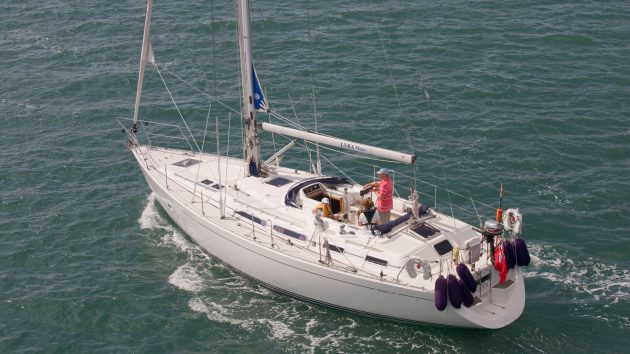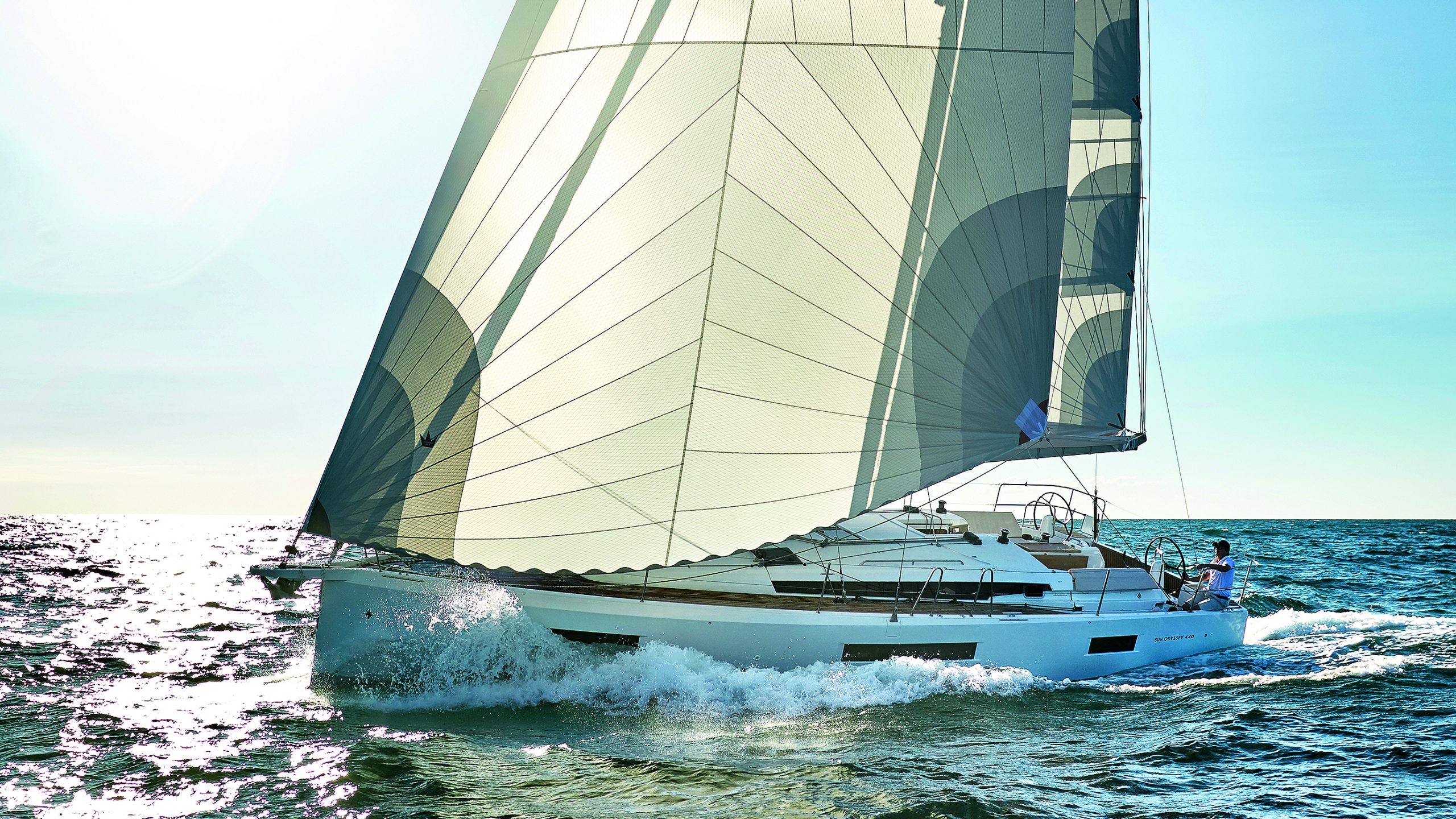Slower isn’t necessarily more efficient when motoring. Christopher Smith explains why
Saving fuel under engine
What should you do when motoring and a headwind starts and reduces your speed from your sweet spot of 6 knots down to 4 knots? writes Christopher Smith.
In terms of fuel economy (nautical miles achieved per litre of fuel) should you stay at 4 knots or increase engine power to recover 6 knots?
Is the answer the same if you round a headland and find waves slowing you by 2 knots – or if there is a 2-knot counter-current?
There are differences between these: going faster into waves means you hit more of them whilst a current has a roughly constant drag.
Likewise, a headwind of 25 knots will look much the same whether you are travelling at 6 or 4 knots. First we need to know something about the fuel economy of your boat.

Saving fuel under engine: Mark your optimum throttle setting with a piece of tape. Credit: Graham Snook/Yachting Monthly
It’s well known that fuel consumption increases dramatically when you approach the hull speed of the boat.
This is usually given as 1.3 times the square root of the waterline length in feet: 7.4 knots for boat with a 10m waterline and 9.1 knots for a boat with a 15m waterline.
At hull speed fuel economy is half or a third that at 70% hull speed.
However, little is published about how fuel economy varies at lower speeds, say 25% to 70% of hull speed.
Continues below…
Busting the hull speed myth
Waterline length is not the defining factor in maximum boat speed that we all think it is. Julian Wolfram busts…
Biodiesel warning: boat owners advised to take action
Sailors are reporting increased filter plugging from a new contaminant, carboxylic acid, or soap, forming as a result of Fatty…
Boat handling: How to use your yacht’s hull shape to your advantage
Whether you have a long keel or twin keel rudders, there will be pros and cons when it comes to…
Why motor sailing is good seamanship
Pete Goss looks at the times it can pay to switch on the engine, making life easier and allowing for…
Theory suggests resistance for a displacement boat should increase as the cube of boat speed but life differs from that.
I searched the web for examples where owners had measured their fuel use at different speeds.
Surprisingly the answer was consistent: over the 25% to 70% speed range the fuel economy is flat.
About 2-3 miles per litre of diesel for smaller yachts (10-15m) to one-mile per litre for larger boats.
This helps define the sweet spot for motoring as about 70% of hull speed: forget about engine revs (marine diesel engines don’t like very high or very low revs but are otherwise fairly indifferent), just think about setting the speed.
The flat economy curve also allows us to do spreadsheet approximations of fuel economy with differing retarding forces.
With reasonably fixed forces, such as for wind, fuel economy recovers by increasing revs to restore the original speed.

Christopher Smith was a physiologist at King’s College, London. Since retiring, he cruises the Med in his Jeanneau Espace 1000
For example, if the wind reduces your speed from 6 knots to 4 knots your fuel economy will fall by 33% as distance covered decreases but fuel consumption remains constant.
Increasing engine revs to return to 6 knots will increase fuel consumption but the fuel economy will fall by only 25%.
This makes sense: if the wind is strong enough to blow you backwards your fuel economy is busted: you must increase engine power.
Adverse currents are different.
Although they slow you down over the ground, the water speed stays the same at your sweet spot – so there you too must remain.
Fighting waves is again different.
Increasing engine power increases the number of waves you hit and fuel economy stays depressed whatever speed you go: waves reducing your speed by a third (6 knots to 4 knots) will likewise reduce your fuel economy whatever speed you choose.
However with higher speeds, and thus the more than proportional extra fuel used, this effect decreases: if you want to motor at 80% of hull speed you can increase engine power to maintain speed with only a moderate extra loss of fuel economy, albeit life onboard may become uncomfortable.
Of course, sailing is almost always the most fuel-efficient way of getting around, but when you can’t sail, it’s good to know when you’re burning fuel unnecessarily, and when a speed increase will pay off and help with saving fuel.
Tips for saving fuel
1. When you are fighting headwinds you should always increase engine power to recover your sweet spot. Just be careful not to exceed 80% of your maximum engine speed unless safety demands it.
2. Adverse currents slow your speed over ground down but you are still travelling through the water at your sweet spot: stay there unless you really need to speed up.
3. When fighting waves, go at whatever speed feels comfortable. The faster you go into waves, the more you hit! Fuel economy takes the same hit when motoring at different moderate speeds.
Enjoyed reading this article?
A subscription to Yachting Monthly magazine costs around 40% less than the cover price.
Print and digital editions are available through Magazines Direct – where you can also find the latest deals.
YM is packed with information to help you get the most from your time on the water.
-
-
- Take your seamanship to the next level with tips, advice and skills from our experts
- Impartial in-depth reviews of the latest yachts and equipment
- Cruising guides to help you reach those dream destinations
-
Follow us on Facebook, Twitter and Instagram.








